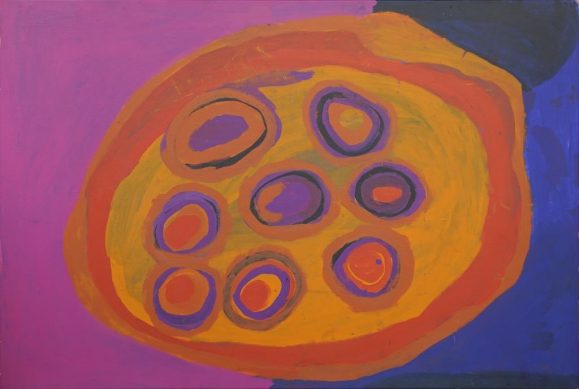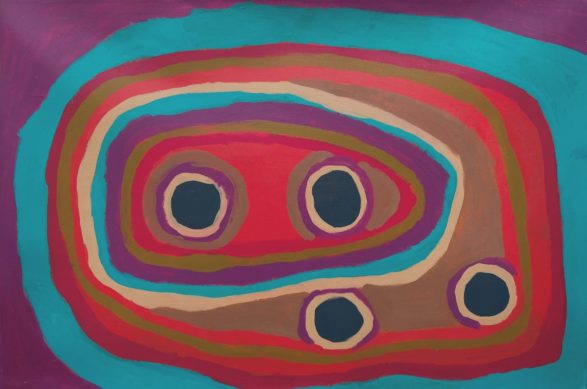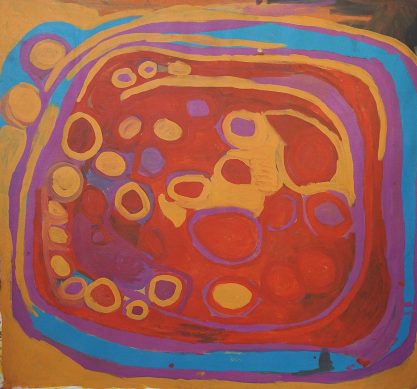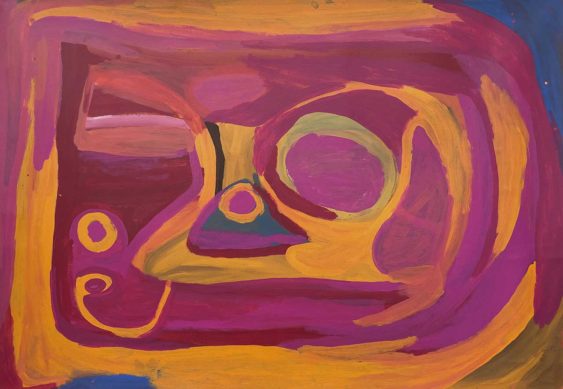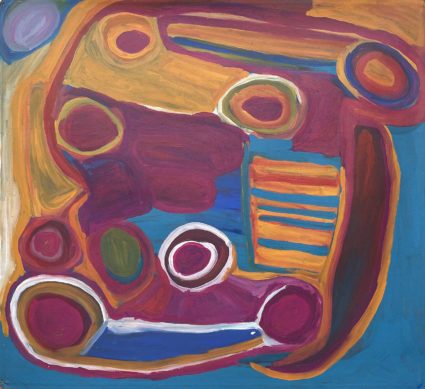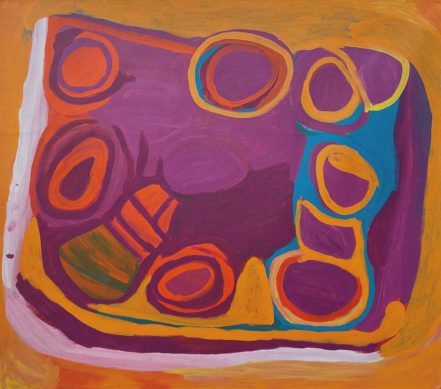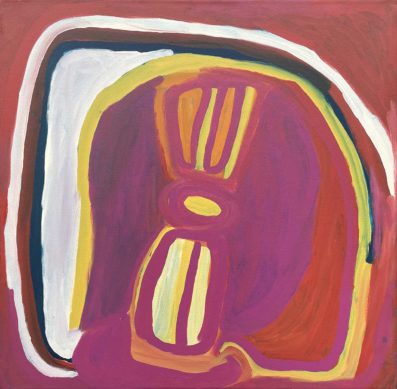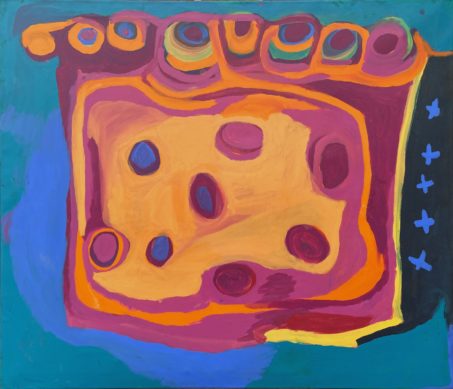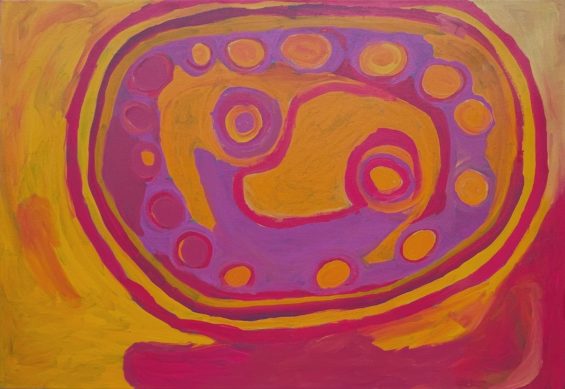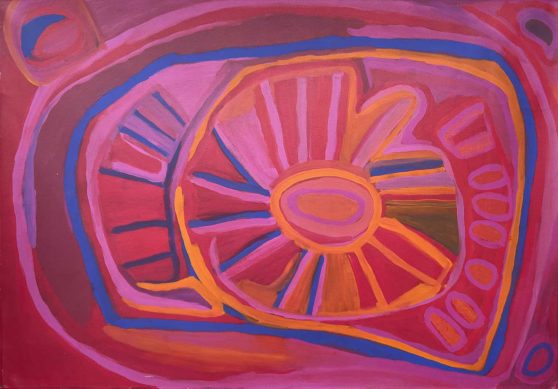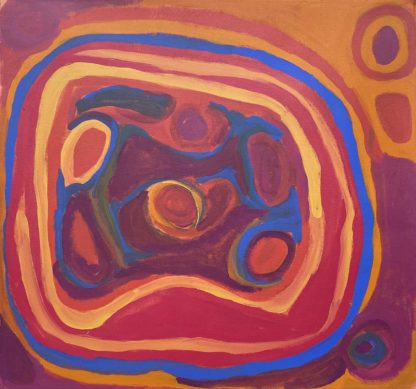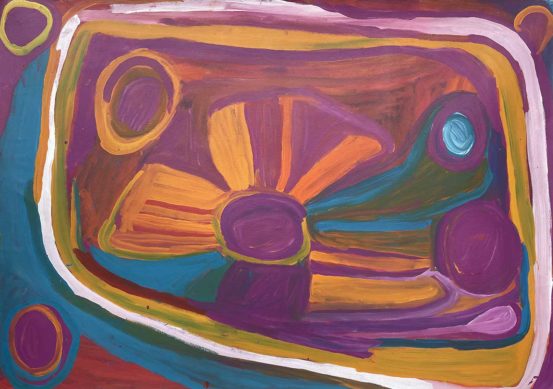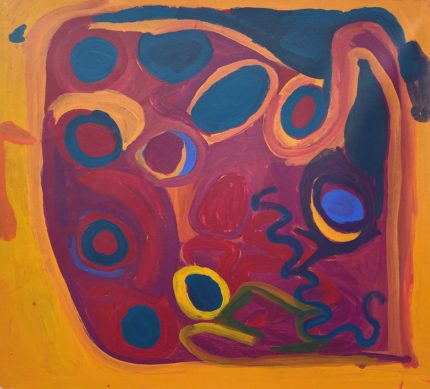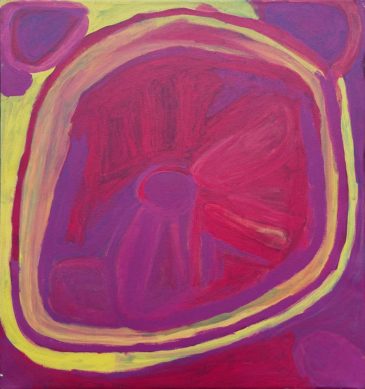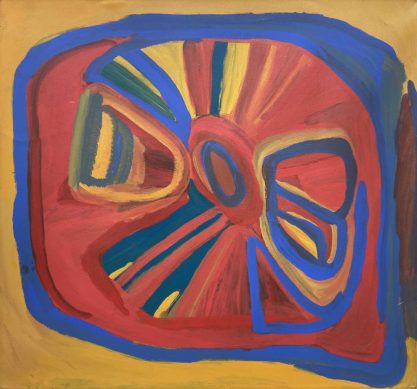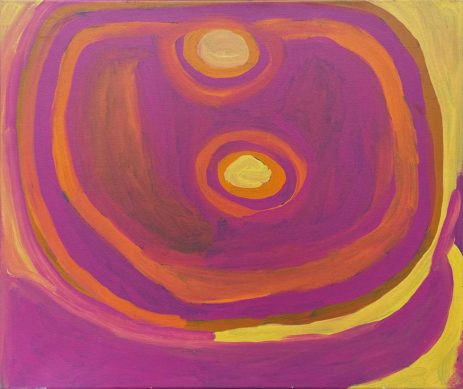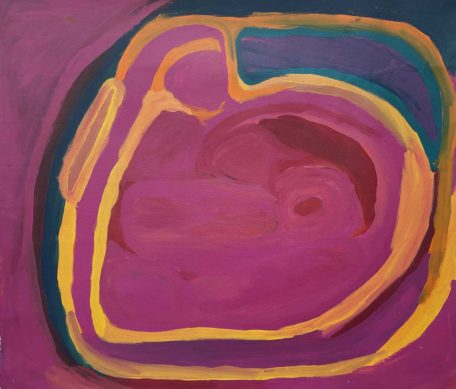Stumpy Brown - Ngupawarlu My Country
Gallery 2
8 April - 24 May 2022
Nyuju Stumpy Brown (1924- 2011) – her boldly coloured renditions of her ceremonial country of Ngupawarlu sing out with an intensity that highlights the spiritual significance of this country to her identity as a painter and as a cultural lawwoman. Stumpy was always an important woman in the community for law and culture. She carried the Women’s Law from Wangkatjungka side right through to desert side at Balgo. She was senior law woman and traditional owner and custodian of Ngupawarlu. At Nyanpi [corroboree] time, Stumpy ran the ceremonies for young children. She described the ceremonies: “No sleep. All night making Nyanpi right through to daylight. Then we go back to sleep.”
Nyuju Stumpy Brown’s full brother was Rover Thomas. The artistic contribution from both Stumpy and Rover signifies the diversity of Kimberley traditions. Stumpy’s stylistic influences came from the Fitzroy Crossing region, with its use of strong and contrasting colour to define form. Rover’s stylistic influences came from the ceremonial dancing boards of the Gija people, which were created with ochre pigment to mark out sweeping forms outlined in white dots. In the cases of both brother and sister, their art is a central part of Kimberley culture with deep roots in desert culture – Wangkatjungka culture.
In 2002 in an ABC radio interview, Stumpy’s story was translated as follows: “I was born among the sandhills, in my own country. There were no white people. We slept without blankets. All we had was a fire to keep us warm. Yeah. We wore no clothes, completely naked. We used to travel around and go hunting on foot. We’d catch large goannas, bandicoots, blue tongue lizards and possums. We’d eat every bit of these animals, even crush the bones and eat them too. My father and mother would both go hunting. My sister and I would stay near the camp and hunt for small lizards. We’d track thorny devils, following its tiny tracks, until we would find one feasting on ants. We would catch it and look around for more. Then we would cook and eat them and save some for our mother and father.”
“The first time I saw an aeroplane was down near the stock route. It landed near us. We thought the white people might kill us. We were frightened of the white people. So we hid in a wattle tree. We sat under that tree looking out. Then someone said, “It’s gone now, it’s a long way off.” My father and mother were frightened too, afraid we might get killed. So we stayed under that tree and didn’t go hunting in case the plane came back. We stayed there overnight, no food, just the bush tucker we had with us.”
When her parents died early in her life, Stumpy was raised by her uncle who was a drover on the stock route. Stumpy describes her country as “desert country. There are no rivers, we never see running water like rivers, only creeks after the rain, only jilji (sandhills).” This was the time when the stock route was being repaired by Canning’s team, after many of the wells had collapsed from neglect. Stumpy’s uncle Jamali took her by camel part of the way north along the stock route towards Balgo Mission. Then she went with a small group into the mission.
In the late 1930s Stumpy walked from Balgo to the south east towards the Fitzroy valley. She camped at Kupartiya creek, near Christmas Creek. She joined other Wangkatjungka countrymen, and worked at Old Bohemia Downs station. Stumpy had a promised husband, Pukulu, and when she married him they moved to old Junjuwa Mission in Fitzroy Crossing. Stumpy said of her time at old Junjuwa Mission: “We don’t know English. Wash clothes, milk nanny goat, separate milk, make butter, everything.”
Stumpy began painting in the mid 1980s in Fitzroy and began exhibiting in 1991. By the late 1990s Stumpy was living most of the time at Wangkatjungka community, and had become the best known of the Wangkatjungka artists. After a stroke in 2006, Stumpy’s capacity to paint greatly diminished.
The exhibition Ngupawarlu My Country is on display at Japingka Gallery until 24 May 2022.


